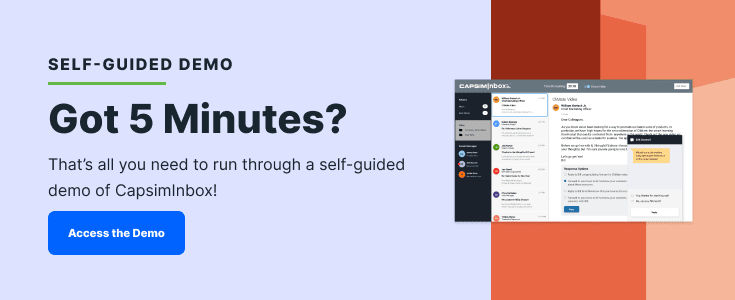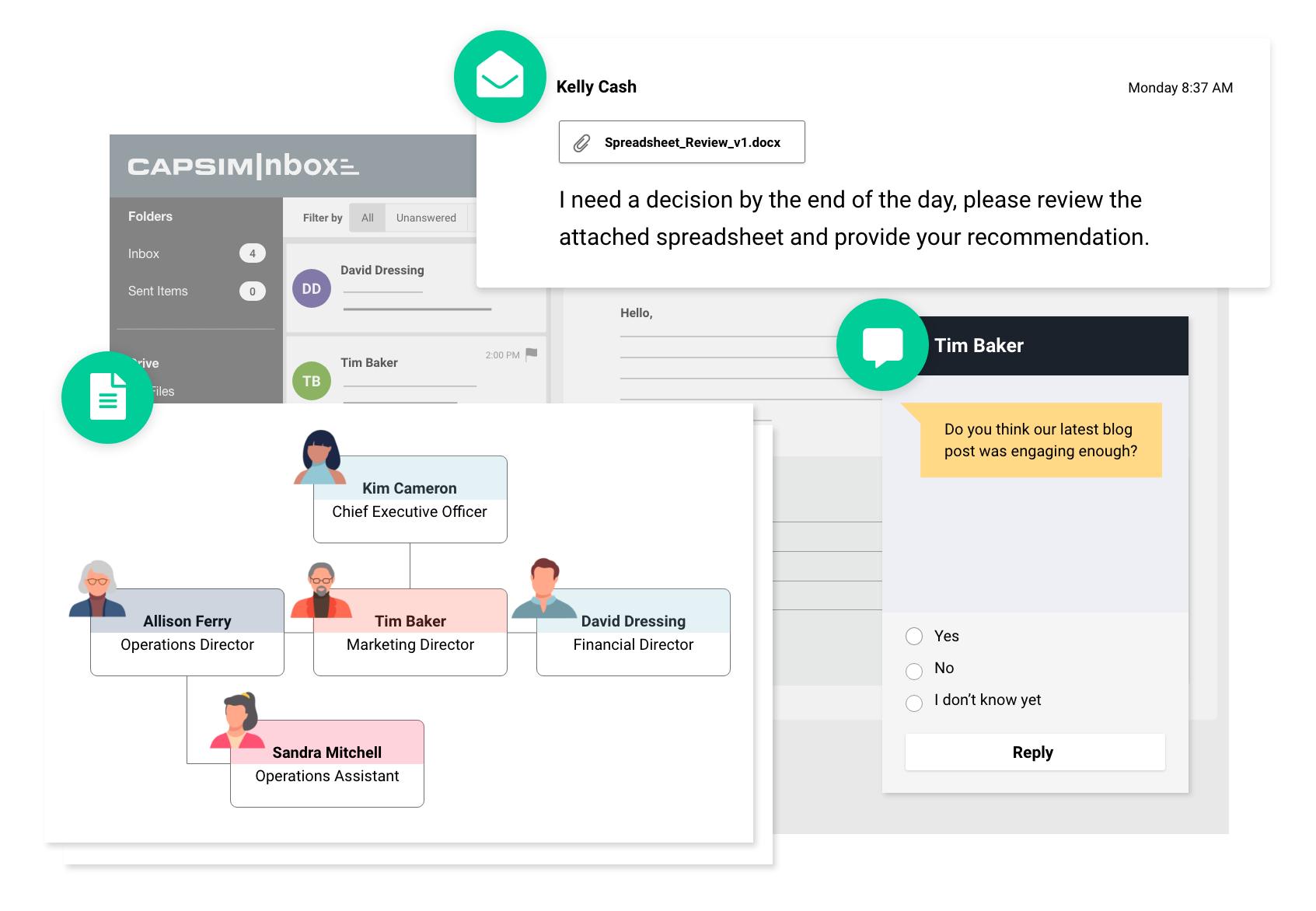How to Develop Leadership Skills in the Workplace in 2022 and Beyond
May 24, 2022

How does an employee become an effective leader? As it turns out, the traditional ways of building and identifying leaders within your company may not be the best approach.
Gone are the days when you could spot future leaders simply by picking out the most extroverted or well-liked employees. There is no scientific data to suggest this is any way to select employees for such important positions.
Today, identifying and developing leaders is a more holistic process that relies on examining your employees' leadership soft skills and emotional intelligence.
This blog post will show you a better way to identify future leaders within your company, including tactics and tools to employ.
Then, we’ll get to the heart of the matter: how to develop the leadership skills of these potential future stars.
How to Develop Future Leaders and their Leadership Skills in the Workplace
Your organization needs leaders at all levels. When a manager leaves your company, should you hire an external candidate, or develop an existing employee’s leadership skills to allow them to move into that role?
Research indicates that it is less expensive to train and promote leaders from within than to source and externally hire for management-level positions or higher.
Additionally, offering development and advancement opportunities helps to increase employee retention. Overall, promoting from within carries several organizational benefits.
However, the question remains: How can you effectively develop leadership skills in your current employees?
Before determining how to train leadership skills, we must define “leadership skills.” What types of skills are included under this umbrella?
Leadership skills will vary depending on the position. However, there are five soft skills every leader should possess:
- Communication
- Problem-solving
- Decision-making
- Conflict resolution
- Motivation
As you’ll notice, these skills are largely internal—challenging to observe, let alone measure. This means it’s often difficult to determine what internal candidates may be good fits for leadership development programs.
When you examine your internal talent pool for leadership candidates, you’ll want to watch for qualities that make a good leader. These qualities are not related to extroversion, confidence, or even internal popularity.
Instead, you will want to find self-aware candidates willing to own up to (and fix) their mistakes, dedicated to learning, and driven to succeed while helping others do the same.
If you find a candidate who checks all these boxes, you may have a strong future leader on your hands.
The Traditional Process for Developing Leadership Skills in the Workplace
Traditionally, organizations focus on a few key indicators to identify and develop leadership skills in the workplace. Employers will consider candidates’ current job performance, existing resumes, and popularity in the workplace. Other factors often used to determine whether a candidate is "leadership material" include age, experience level, personal relationships with current managers, and appearance.
In short, current leadership development practices are more about finding candidates who fit into a mold of what the organization thinks leaders “look like.”
The flaws of this method are numerous. The most obvious flaw is that this leadership development method is subject to bias. Promoting only people who look and think like the leaders who came before them also limits your organization’s potential, cutting out opportunities to gain insights from talented employees who may be younger, less tenured, or otherwise different from the mold your organization has defined as “leadership material.”
In other words, this leadership development method often overlooks vital elements of an employee’s skill set and character, such as ethics, soft skills, drive, goals, and more.
Legacy leadership development methods tend to rely on training tactics like seminars, conferences, books, and video content. These types of training may facilitate knowledge acquisition, but they are weaker in knowledge retention.
In other words, if you continue to use these outdated leadership development and training methods, not only will you miss out on incredible candidates for development, but you will fail to train the candidates you choose effectively.
A Better Way to Identify and Develop Leaders in the Workplace
To Identify and develop leaders in the workplace more effectively, you will want to use a two-pronged approach—identification of future leaders followed by leadership skill development practices. Let’s examine each step in more detail.
Identification
When identifying future leaders, throw out your old, predetermined “leadership checklist.” No two management positions require the same set of skills. Instead of looking for a generic skill set that may not genuinely benefit a manager in a specific role in your organization, begin to examine how each employee leads in their own way.
Consider what each employee does well in their current position. Build genuine connections with employees to learn what they are passionate about and their personal goals for career growth.
When assessing potential leadership skills, don’t rely on conversations or interviews. These assessment methods rely on employee and interviewer impressions and opinions, which are inescapably biased.
Instead, use inbox simulations to test skills. This testing method will help you identify skills and any gaps between an employee’s perceived performance and actual performance in a simulated environment. Knowledge of these skills gaps can aid in self-improvement and support further training and development efforts.
Leadership Skill Development
Once you’ve identified the best-suited candidates for leadership development opportunities, you can begin leadership skills training.
The knowledge acquisition methods discussed earlier in this post, such as presentations, seminars, and videos, can be useful, but they are only one piece of the puzzle. For the learning to be “sticky” — for the trainee to recall and retain the knowledge they have learned — they will need to be able to put the concepts learned to practice.
Related Read: Transfer of Training: 4 Secrets to Making Employee Learning Stick
Consider your leadership training like sports training: A basketball team doesn’t simply learn plays in the locker room and then run them perfectly in a game on the first try. Instead, the team will work on drilling those plays and other key gameplay concepts in a practice environment before ever setting foot in a real game environment.
Similarly, your future leaders need the opportunity to run drills to apply their newly acquired knowledge in a safe, risk-free environment. You can provide leadership trainees with the opportunity to practice and hone their new skills through several different methods:
Role-Playing
Role-playing exercises encourage participants to engage in conversations or scenarios under the guidance of a trainer or L&D professional. These role-plays allow trainees to practice skills with one another while obtaining immediate feedback from their trainer.
Internal Team Projects
Internal team projects are slightly riskier than role-playing, as there may be real-world consequences to decisions made. However, by encouraging your trainees to practice their new skills internally, you can allow them to run a real project without risking issues arising on a client-facing or other externally visible project.
Inbox Simulations
Inbox simulations provide experiential learning, similar to role-playing, but they are self-directed, measurable, and easier to scale than role-playing. You can tailor inbox simulations to specific skills or scenarios, enabling your trainees to gain experience in decisions and communications they will face in a real-world environment.
Inbox Simulations: How to Give Future Leaders the “Sets and Reps” They Need
When developing leadership skills in the workplace, inbox simulations are invaluable. You cannot set your future leaders up for success if you are using outdated training methods that do not align with the realities of the modern business environment.
If you want to prepare your learners to lead your organization effectively, you need customized, practical, and engaging training.
Inbox simulations enable you to create learning experiences that stick. You can use CapsimInbox to develop a cycle of learning, feedback, and growth—all encompassed within a safe, controlled environment.
To see how CapsimInbox can help your organization better prepare your future leaders for success, test drive an inbox simulation today. It takes only a few minutes to see how inbox simulations can change your L&D processes for the better. 




.png?width=80&name=1-questions%20(1).png)